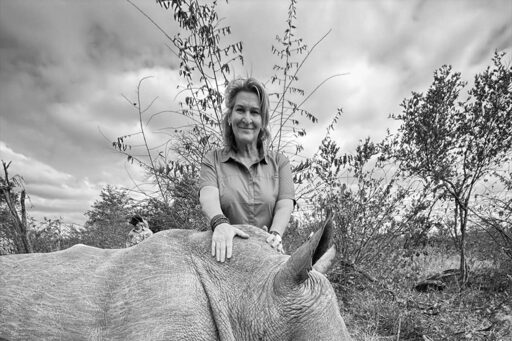Founder’s Briefs: An occasional series where Mongabay founder Rhett Ayers Butler shares analysis, perspectives and story summaries. In the final months of her life, Sharon Haussmann could still be found walking fence lines, coordinating antipoaching patrols, and debating the finer points of dehorning protocol with field rangers and policymakers alike. The work was unrelenting, the stakes immense. But for Haussmann, the head of the Greater Kruger Environmental Protection Foundation (GKEPF), conservation was never a calling one answered from a desk. It was done in the bush, in boots, often before dawn, always among the people and creatures whose fate she had chosen to share. South Africa’s white rhinos (Ceratotherium simum) had in her one of their fiercest modern champions. As poaching syndicates turned increasingly militarized and the costs of protecting wildlife soared into the tens of millions of dollars, Haussmann helped lead one of the most ambitious rewilding operations in recent memory: the relocation of 120 southern white rhinos from a controversial breeding program into safer private reserves on the edge of Kruger National Park. “They are literally ecosystem engineers,” Haussmann previously told Mongabay. “We need white rhinos.” Each rhino was sedated, dehorned, and fitted with surveillance, the last steps in a fraught, hopeful journey back to the wild. Haussmann was not only a strategist, but a scientist. Her fascination with hyenas, an animal often dismissed or reviled, led her to spend more than 3,000 hours at den sites. She published two papers on their behavior, offering a glimpse into…This article was originally published on Mongabay
From Conservation news via this RSS feed


